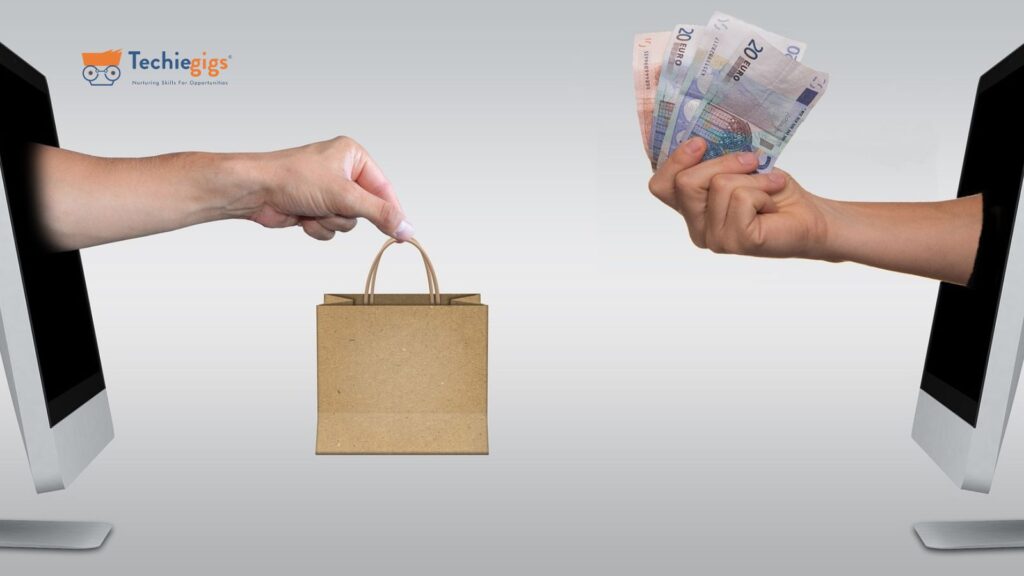6 Types of E-Commerce Business Models: Which One is Right for You?
In the last few years, the world has witnessed an unprecedented rise in e-commerce business From small startups to global corporations, businesses are leveraging the power of the internet to reach audiences across borders, reduce overhead costs, and maximize profits. However, the key to success in the e-commerce business lies in selecting the right e-commerce business model. This guide will walk you through the most popular business models of e-commerce, their pros and cons, and help you determine which one fits your entrepreneurial goals.
Table of Content
What is an E-Commerce Business Model?

An e-commerce business model defines how an online business structures its operations to generate revenue. It includes the method of selling, target audience, and product delivery. Understanding different models of e-commerce is crucial because the model you choose will affect everything from your marketing strategy to your profit margins.
Factors to Consider When Choosing a Model
Before diving into the specifics of e-commerce business models, consider these factors:
- Target Audience: Who are you selling to? Consumers, businesses, or both?
- Product Types: Are you offering physical goods, digital products, or services?
- Scalability and Growth Potential: How easy is it to expand your e-commerce business?
The 6 Most Common E-Commerce Business Models
1. B2C (Business-to-Consumer) E-Commerce
The B2C e-commerce business model involves selling products directly to consumers. This is the most common model, with giants like Amazon and Walmart leading the way.
- Examples: Amazon, Walmart, Target
- Pros:
- Broad audience reach
- Easier to scale due to high demand
- Cons:
- Intense competition
- Higher marketing and advertising costs
- Best For: Retailers and product manufacturers aiming to sell directly to the end consumer.
2. B2B (Business-to-Business) E-Commerce
In the B2B e-commerce business model, businesses sell products or services to other businesses. Platforms like Alibaba and Salesforce have thrived using this model.
- Examples: Alibaba, Salesforce, Shopify Plus
- Pros:
- Higher order values and long-term contracts
- Stable revenue streams
- Cons:
- Longer sales cycles
- Complex negotiation processes
- Best For: Wholesalers, service providers, and manufacturers.
3. C2C (Consumer-to-Consumer) E-Commerce
The C2C e-commerce business model allows consumers to sell directly to other consumers. Online marketplaces like eBay and Etsy are prime examples.

- Examples: eBay, Etsy, Facebook Marketplace
- Pros:
- Low startup costs
- Community-driven growth
- Cons:
- Trust issues between buyers and sellers
- Limited scalability for sellers
- Best For: Individual sellers and creators of handmade or vintage products.
4. D2C (Direct-to-Consumer) E-Commerce
The D2C e-commerce business model involves manufacturers selling directly to consumers without intermediaries. Brands like Glossier and Warby Parker have popularized this model.
- Examples: Glossier, Warby Parker, Casper
- Pros:
- Full control over branding and customer experience
- Higher profit margins
- Cons:
- Requires strong marketing and customer acquisition strategies
- Best For: Brands focused on unique, niche products.
5. Subscription-Based E-Commerce Models
The subscription e-commerce business model offers products or services on a recurring basis. Companies like Netflix and Dollar Shave Club have mastered this model.
- Examples: Netflix, Dollar Shave Club, Birchbox
- Pros:
- Recurring revenue and customer loyalty
- Predictable income streams
- Cons:
- High churn rates if value isn’t consistently delivered
- Best For: Service providers and businesses offering consumable products.
6. Dropshipping and Print-on-Demand Models
The dropshipping e-commerce business model allows entrepreneurs to sell products without holding inventory. Similarly, print-on-demand enables custom products without upfront costs.
- Examples: Oberlo, Printful, Teespring
- Pros:
- Low startup and operational costs
- No need for inventory management
- Cons:
- Lower profit margins
- Limited control over shipping and product quality
- Best For: Entrepreneurs testing product ideas and those with limited startup capital.
Emerging E-Commerce Business Models to Watch
1. Social Commerce
Social commerce integrates e-commerce business with social media platforms like Instagram and TikTok. This model capitalizes on social engagement to drive sales directly through social apps.
2. Mobile Commerce (M-Commerce)
M-commerce focuses on transactions via mobile devices. As smartphone usage increases, this e-commerce business model continues to grow, offering convenience and accessibility to consumers.

3. Marketplace Models
Marketplace models combine multiple sellers under one platform, such as Amazon and Etsy. This model allows businesses to benefit from a larger audience while offering diverse product selections.
4. Affiliate E-Commerce
The affiliate e-commerce business model involves earning commissions by promoting other companies’ products. Affiliates drive traffic to e-commerce businesses and earn a percentage of each sale made through their referral links.
Choosing the Right E-Commerce Business Model for Your Brand
1. Identifying Your Target Audience
Understanding your target audience is the first step in selecting the right e-commerce business model. Are you selling to individual consumers, businesses, or both? Define their demographics, preferences, and purchasing behaviors. Consider whether your audience prefers convenience, customization, or price competitiveness.
- Demographics: Age, gender, income level, and location can influence purchasing habits.
- Psychographics: Lifestyle choices, values, and interests can shape how your audience interacts with your brand.
- Buying Behavior: Are they impulse buyers, or do they take time to research before making a purchase?
2. Aligning with Your Resources and Goals
Evaluate your resources, including budget, team, and technology. Align your chosen e-commerce business model with your long-term business goals. Consider:
- Financial Resources: Do you have the capital to invest in inventory, marketing, or technology?
- Human Resources: Do you have a team skilled in marketing, logistics, and customer service?
- Technological Resources: Do you have the necessary e-commerce platforms, tools, and integrations to support your model?
- Business Goals: Are you aiming for rapid growth, long-term sustainability, or niche market dominance?
3. Considering Long-Term Scalability
Choose an e-commerce business model that allows for growth. Consider factors like market demand, competition, and the ability to scale operations efficiently. Evaluate:
- Market Trends: Is your product category growing, stable, or declining?
- Competition: How saturated is the market, and what differentiates your brand?
- Operational Efficiency: Can your supply chain, logistics, and customer service scale with increased demand?
- Technological Infrastructure: Is your website, payment system, and inventory management scalable?
Frequently Asked Questions (FAQs)
1. What is the most profitable e-commerce business model?
The most profitable model depends on your niche, audience, and resources. However, D2C and subscription models often offer higher margins.
2. Can I combine multiple e-commerce business models?
Yes, many businesses successfully combine models, such as B2C with subscription services.
3. How much investment is required to start an e-commerce business?
Startup costs vary by model. Dropshipping requires minimal investment, while D2C and B2B may need more substantial funding.
4. What are the biggest challenges in running an e-commerce business?
Common challenges include managing logistics, handling customer service, staying competitive with pricing, and driving traffic to your website. Additionally, maintaining cybersecurity and adapting to changing technology can be significant hurdles.
5. How do I choose the right e-commerce platform for my business?
Selecting an e-commerce platform depends on your business needs, budget, and technical expertise. Popular options include Shopify, WooCommerce, Magento, and BigCommerce. Consider factors like ease of use, scalability, payment integration, and available features.
6. What are the key metrics to track for e-commerce success?
Important metrics include conversion rate, average order value (AOV), customer acquisition cost (CAC), customer lifetime value (CLV), cart abandonment rate, and website traffic. Regularly analyzing these metrics can help optimize your e-commerce strategy.
Final Thoughts
To thrive in the dynamic e-commerce business landscape, businesses must remain adaptable and proactive. Staying updated on industry trends, leveraging data analytics to refine strategies, and embracing omnichannel approaches are key to maintaining competitiveness.
Prioritizing exceptional customer experiences, from seamless website navigation to responsive support, fosters loyalty and repeat business. Continuous innovation in business models, marketing tactics, and product offerings ensures relevance in a rapidly evolving market.
Building strong brand loyalty through personalized engagement and community-building efforts further strengthens a business’s position. By focusing on these strategies, e-commerce businesses can navigate changes effectively and achieve sustained success.

